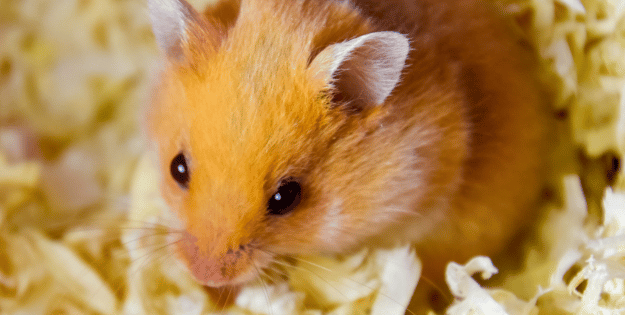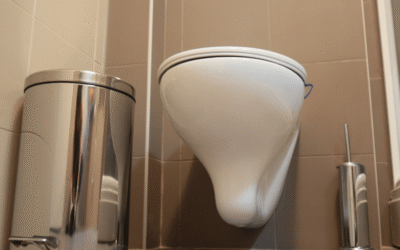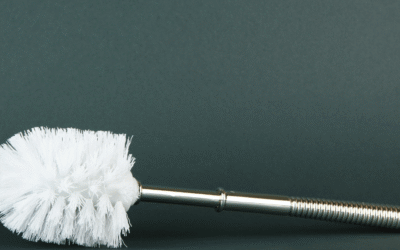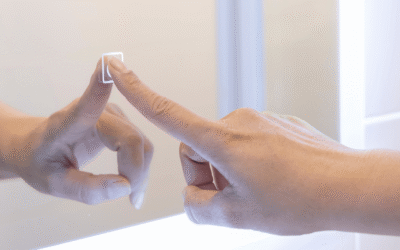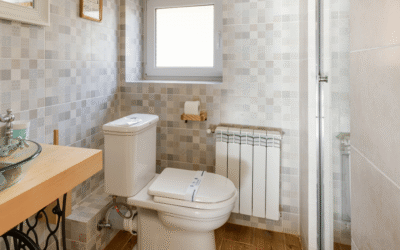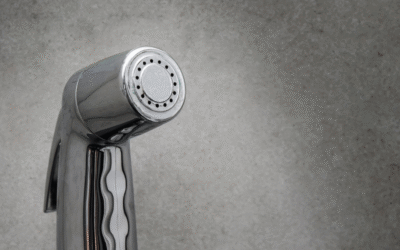Choosing the right bedding for a hamster is more than just a comfort choice—it’s essential for their health and happiness. In the wild, hamsters are natural diggers, creating intricate burrows to sleep, store food, and hide from predators. Mimicking this environment in captivity means selecting bedding that supports their instinctual behaviours.
The best hamster bedding not only allows for burrowing but also ensures the pet’s safety and wellbeing. It should be absorbent, non-toxic, and odour-reducing, providing a clean and comfortable habitat. Materials like Carefresh and Kaytee, known for their tissue clump texture, are popular for their ability to hold burrow structures.
Incorporating a mix of textures, such as soft hay and aspen wood, can enrich the hamster’s environment, encouraging exploration and play. By understanding these needs, pet owners can create a stimulating and secure home, ensuring their furry friend’s contentment and health.
Top Amazon Sellers
Key Takeaways
- Selecting the best hamster bedding is crucial for supporting your pet’s natural burrowing instincts, safety, and comfort.
- Safe bedding options include paper-based bedding, aspen shavings, and hemp bedding, all of which offer superior absorbency and reduce respiratory risks.
- Avoid potentially harmful bedding like cedar shavings, pine shavings, scented materials, and cotton wool due to risks such as respiratory irritation and injury.
- Key factors in choosing bedding include odour control, cost-effectiveness, and environmental impact, ensuring both pet welfare and eco-friendliness.
- DIY bedding options, such as shredded paper and hay, offer cost-effective solutions but must be free from ink or residues to avoid health hazards.
- Regular maintenance, including weekly bedding changes and ensuring proper bedding depth, enhances hygiene and supports hamster wellbeing.
Importance of Choosing the Right Bedding
Selecting the best hamster bedding is essential for the well-being and comfort of pet hamsters. Bedding acts as their primary environment, making qualities like non-toxicity and odour reduction critical. Hamsters are natural burrowers, requiring bedding that supports this instinctual behaviour by allowing tunnelling and nest-building. An ideal bedding choice absorbs moisture effectively, minimising the risk of mould and bacteria growth. Safety is paramount, so materials should be dust-free to avoid respiratory issues in hamsters. Providing suitable bedding contributes to a hamster’s overall health, enabling them to express natural behaviours and reducing stress, thus enhancing their quality of life.
Types of Hamster Bedding
Hamster bedding plays a vital role in creating a healthy and engaging environment for these small pets. Different types of bedding offer various benefits, balancing comfort, odour control, and support for natural burrowing behaviour.
Aspen Shavings
Aspen shavings, a popular choice among pet owners, provide excellent odour control and are dust-free, reducing the risk of respiratory issues. They’re safe for burrowing but require additional support, like paper-based materials, to enhance tunnel structures.
Paper-Based Bedding
Paper-based bedding remains a top contender for its comfort and versatility. It supports burrowing well and is available in various colours. It should be unscented and ink-free to prevent respiratory irritation. Paper-based options are soft and promote natural tunneling.
Hemp Bedding
Hemp bedding, marketed for its versatility, offers a similar texture to sawdust but without the dust, which can cause respiratory issues. This bedding type needs combining with others for effective burrow support but excels in absorbency and odour control.
Soft Granule Blend
A soft granule blend offers a balance of comfort and burrow support. The granules are soft, mimicking natural soils, and they help maintain tunnel structures. This option is also noted for its non-toxic properties and odour control, making it a safe bedding choice.
Paper Pellets
Paper pellets are known for their superior absorbency and odour control, making them ideal for managing moisture. Their dense nature doesn’t allow for burrowing on its own, so they’re best combined with softer bedding types to ensure natural behaviour support.
Hay Options
Hay offers an additional texture and enrichment to the hamster’s habitat. It’s best used in combination with other bedding types to provide varied digging experiences. Safe and dust-free, hay can enhance burrow construction when mixed with other substrates.
Safe Versus Unsafe Bedding
Selecting the best hamster bedding prioritises safety and the overall well-being of the pet. Hamsters thrive in environments that support their natural instincts and health.
Safe Bedding Choices
Paper-based bedding offers superior safety with its soft texture and excellent absorbency, reducing respiratory issues. Aspen shavings are another safe option as they are dust-free and maintain burrowing structures. Hemp bedding, with high absorbency, is safe if correctly layered to support tunnels. Each option covers safety, hygiene, and comfort, making them suitable choices.
Bedding to Avoid
Certain materials pose significant risks to hamsters. Cedar and pine shavings are unsafe due to their dustiness and potential respiratory irritants. Fluffy bedding materials like cotton wool can cause injuries and gut blockages if ingested. Scented beddings and shredded newspaper are harmful as they can irritate airways and be toxic. Prioritising material safety is essential in selecting suitable bedding.
Factors to Consider When Choosing Bedding
Selecting the best hamster bedding involves evaluating several essential factors to ensure the safety and comfort of your pet.
Odour Control
Effective bedding offers excellent odour control by absorbing urine and reducing ammonia build-up. This feature maintains a pleasant environment, minimising potential respiratory problems. Seek materials known for their high absorbency and air circulation properties to combat odour efficiently.
Cost-Effectiveness
Cost-effective bedding balances quality and affordability without compromising animal welfare. High-value options offer longevity through reusability or require less frequent changes. Consider bedding that sustains its performance over time to avoid frequent replacements and ensure hamster comfort.
Environmental Impact
Environmentally friendly bedding utilises sustainable and biodegradable materials, reducing ecological footprints. Opt for bedding sourced from renewable resources and free from harmful additives. This consideration aids in conservation efforts and promotes a healthier living space for your hamster.
DIY Hamster Bedding Options
DIY hamster bedding options offer cost-effective and customisable solutions for creating a safe habitat. Materials like shredded paper and cardboard are popular due to their availability and affordability. They provide a soft, absorbent base, though it’s crucial to ensure they’re non-toxic and free from ink or harmful residues. Hay and straw also serve as budget-friendly alternatives, with added benefits of texture and burrow support. It’s vital to inspect these materials for dust or mould to avoid potential health issues for the hamster. Combining different DIY materials can enhance comfort and mimic the hamster’s natural environment more closely. This approach not only reduces costs but also allows pet owners to tailor the bedding for optimal hamster health and engagement.
Tips for Maintaining Bedding
Proper upkeep of hamster bedding ensures a healthy environment. Careful attention to cleaning and depth fosters natural behaviour and comfort.
Cleaning Schedule
Change bedding once or twice a week to maintain hygiene. Regular checks help reduce odour and prevent bacterial growth. Remove soiled areas more frequently if needed to enhance cleanliness and odour control in the enclosure.
Ensuring Ample Bedding Depth
Provide sufficient bedding depth for burrowing activities and tunnel stability. A deeper bedding layer supports natural digging instincts and offers thermal insulation. Compacting the bedding in layers enhances tunnel formation, creating a secure and engaging space.
Conclusion and Top Picks
Choosing the right hamster bedding is vital for ensuring their health and happiness. It’s not just about comfort but also about supporting their natural behaviours and maintaining a healthy environment. The variety of bedding options available allows pet owners to tailor their hamster’s habitat for maximum engagement and safety. By focusing on materials that are absorbent, non-toxic, and odour-reducing, owners can create a comfortable and stimulating environment. Regular maintenance and attention to bedding depth further enhance the hamster’s living conditions, promoting their well-being and allowing them to thrive.
Frequently Asked Questions
What is the best bedding for hamsters?
The best bedding for hamsters is safe, non-toxic, and supports natural behaviours. Ideal options include paper-based bedding, aspen shavings, or a soft granule blend for burrowing support. These materials offer excellent absorbency, odour control, and are dust-free, fostering a healthy environment. Carefresh and Kaytee Clean & Cozy are top picks for bedding due to their softness and support for tunnelling. Always avoid cedar and pine shavings, as they can irritate the respiratory system.
How often should you change hamster bedding?
You should change your hamster’s bedding once or twice a week to maintain a clean and healthy environment. Regular checks should be conducted to remove soiled areas, which helps control odours and prevent the growth of bacteria. A thorough clean of the hamster’s habitat should occur monthly, ensuring any stored food is removed during the process. Frequent cleaning helps protect your hamster’s respiratory health and overall well-being.
How deep should a hamster’s bedding be?
Hamster bedding should be at least 5 to 7 inches deep to allow for proper burrowing, which is essential for their comfort and natural behaviours. A depth of around 10 inches can enhance insulation and support temperature regulation, particularly in cooler months. Deep bedding allows hamsters to create stable tunnels and nests, providing both security and entertainment. Ensuring sufficient depth helps mimic their natural environment and promotes physical and mental health.
Is toilet paper safe as bedding for hamsters?
Yes, toilet paper is safe and can be used as hamster bedding. It’s soft and comfortable, making it easy for hamsters to manipulate into nests. For use, tear the toilet paper into strips, providing a cosy and absorbent bedding alternative. Be sure to use unscented, plain toilet paper without any added chemicals or colours, ensuring it’s safe for your pet to burrow in and interact with.
What are the top hamster bedding brands?
Top hamster bedding brands include Carefresh and Kaytee Clean & Cozy. Carefresh offers a soft, absorbent bedding ideal for burrowing, while Kaytee Clean & Cozy is lauded for its superior odour control and comfort. Both brands provide dust-free, non-toxic options, making them safe choices for your hamster’s health. These brands support the natural behaviours of your pet and promote a healthier living environment.

